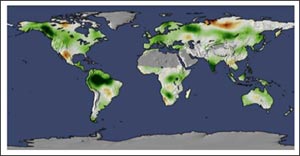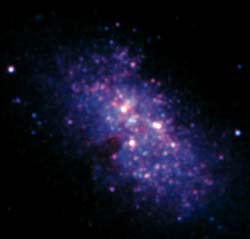
New glow-in the-dark plastic technology has enabled researchers to develop a torch that glows in the dark, so you can find it in the dark. Collaboration between DualGlo Ltd, a Hereford technology company and Innovation-Direct, a free consultancy service for SME companies delivered by the Universities of Warwick and Wolverhampton, has developed a unique product that is now entering markets all around the world.
After turning to the Innovation Direct advice centre DualGlo Ltd, a small techno

Expanding their successful business relation Siemens Information and Communication Mobile (FSE, NYSE: SIE), a leading provider of mobile phones, and Infineon Technologies (FSE, NYSE: IFX), a leading semiconductor supplier for secure mobile solutions, today announced that Siemens has chosen Infineon’s S-GOLD Family for their next generation of multimedia oriented GPRS and EDGE handsets.
Infineon’s chipset platforms for GPRS and EDGE handsets are based on S-GOLDlite and S-GOLD. Both platforms

A NASA-Department of Energy jointly funded study concludes the Earth has been greening over the past 20 years. As climate changed, plants found it easier to grow.
The globally comprehensive, multi-discipline study appears in this week’s Science magazine. The article states climate changes have provided extra doses of water, heat and sunlight in areas where one or more of those ingredients may have been lacking. Plants flourished in places where climatic conditions previously limited gro

’Finished’ sequence reveals twice as many genes, cereal similarity
Behold a grain of rice. Inside are thousands of cells; within each cell are 12 chromosomes; and on rice’s smallest chromosome, No. 10, are about 3,500 genes and more than 22 million base pairs, the links in the chain of DNA.
So, what’s the big deal about rice’s smallest chromosome?
There are several, according to a report in the June 6 issue of the journal Science. Upon close exami

For decades, scientists have disagreed about the way the brain gathers memories, developing two apparently contradictory concepts. But newly published research by a team of scientists at Rutgers-Newark’s Center for Molecular and Behavioral Neuroscience (CMBN) indicates that both models of memory may be partially correct – and that resolving this conflict could lead to new approaches for the treatment of memory disorders such as Alzheimer’s Disease.
The dispute has centered on how

A small, bizarre cluster of a million young stars, enshrouded in thick gas and dust in a nearby dwarf galaxy, has been confirmed by Jean Turner, UCLA professor of physics and astronomy, and her colleagues, in the June 5 issue of the journal Nature.
Turner and her colleagues estimate that the stars are still in the process of forming, and are less than a million years old — extremely young by astronomical standards.
The cluster contains more than 4,000 massive “O” stars, each a milli

– new calculation confirms standard model of particle physics. Contribution of hadronic vacuum polarization determined with unprecedented accuracy. The magnetic moment of the muon is an important precision parameter for…
Technique may prevent formation of unwanted waves that siphon off needed energy. Heating plasma to the ultra-high temperatures needed for fusion reactions requires more than turning the dial on a…

An international team of astronomers, led by researchers from the Astronomical Observatory of the University of Warsaw, have identified a new class of cosmic X-ray sources. The findings have been…

How deubiquitinases USP53 and USP54 cleave long polyubiquitin chains and how the former is linked to liver disease in children. Deubiquitinases (DUBs) are enzymes used by cells to trim protein…

Conceptual blueprint to analyze experimental catalyst data. Machine learning (ML) models have recently become popular in the field of heterogeneous catalyst design. The inherent complexity of the interactions between catalyst…

Antibody that Neutralizes Inhibitory Factors Involved in Nerve Regeneration Leads to Enhanced Motor Function after Acute Spinal Cord Injury. Researchers at 13 clinics in Germany, Switzerland, the Czech Republic and…

How simulations help manufacturing of modern displays. Modern materials must be recyclable and sustainable. Consumer electronics is no exception, with organic light-emitting diodes (OLEDs) taking over modern televisions and portable…

“Neurons that fire together, wire together” describes the neural plasticity seen in human brains, but neurons grown in a dish don’t seem to follow these rules. Neurons that are cultured…

The quest for sustainable energy solutions has been a major focus of scientific research for decades. Solar energy, a clean and renewable source, has emerged as a promising alternative to…

With a processing speed a billion times faster than nature, chip-based laser neuron could help advance AI tasks such as pattern recognition and sequence prediction. Researchers have developed a laser-based…

New technology could remotely identify various types of plastics, offering a valuable tool for future monitoring and analysis of oceanic plastic pollution. Researchers have developed a new hyperspectral Raman imaging…

Artificial Intelligence (AI) has established a strong presence across industries, large and small. The “VoBaKI” research project has empowered small and medium-sized enterprises (SMEs) with an innovative tool to independently…